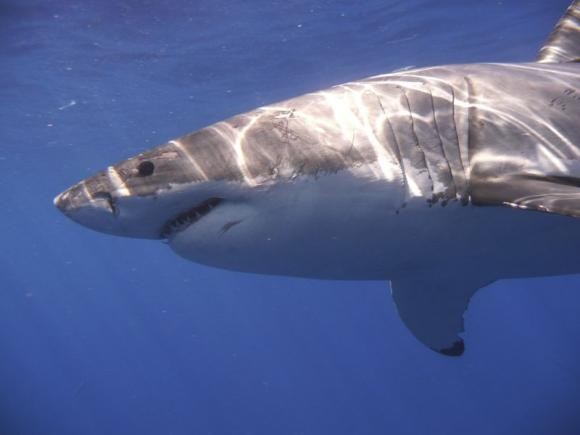Study Shows Humans Evolved from 'Cartilaginous Fishes'
| Marco Foronda | | Jan 13, 2015 06:41 AM EST |
(Photo : Reuters)
A new study of a fossilized fish skull dismissed the popular theory modern bony fish evolved from sharks. It also showed humans evolved from what are called "cartilaginous fishes".
Researchers from the Imperial College London and Oxford University examined a 415 million year-old fossil and found out that sharks aren't as primitive as their ancestors.
Like Us on Facebook
Using CT scans and X-rays, researchers studied the fossil they called "Janusiscus" for its two-faced feature. The fossil was named after the two-faced Roman god, Janus.
Janusiscus's brain case is an internal skeleton made of cartilage. This makes the fossil more similar to the cartilaginous fish family that includes sharks and rays than the bony fish family.
In addition, the absence of a division on the bottom of the skull indicates that its evolution is in the infancy stage. Present-day sharks similarly lack external skulls.
The scans showed the fossil also has an external skull, albeit smaller. Researchers suggested that sharks lost the skeleton on their faces early in their evolution.
The two features Janusiscus possesses branched out to two families in the evolution history: cartilaginous fish and bony fish. The former further evolved to land vertebrates and finally, humans.
"This mix of features, some reminiscent of bony fishes and others cartilaginous fishes, suggests that humans may have just as many features that you might call 'primitive' as sharks," Oxford University's Department of Earth Sciences researcher Matt Friedman said.
Experts previously pinned sharks on the primitive stage of the evolution history because of its external features but recent findings led them to give sharks another look.
"Janusiscus has helped us to look at sharks differently," said Martin Brazeau of Imperial College of London's Department of Life Sciences.
The fossil provided researchers new evolutionary insights, Dr. Brazeau added.
Janusiscus was discovered in 1972 in Siberia and is currently kept at the Tallinn University of Technology in Estonia.
Tagssharks, evolution, Janusiscus, Imperial College London, Oxford University, Fossil, Research, Study
©2015 Chinatopix All rights reserved. Do not reproduce without permission
EDITOR'S PICKS
-

Did the Trump administration just announce plans for a trade war with ‘hostile’ China and Russia?
-

US Senate passes Taiwan travel bill slammed by China
-

As Yan Sihong’s family grieves, here are other Chinese students who went missing abroad. Some have never been found
-

Beijing blasts Western critics who ‘smear China’ with the term sharp power
-

China Envoy Seeks to Defuse Tensions With U.S. as a Trade War Brews
-

Singapore's Deputy PM Provides Bitcoin Vote of Confidence Amid China's Blanket Bans
-

China warns investors over risks in overseas virtual currency trading
-

Chinese government most trustworthy: survey
-

Kashima Antlers On Course For Back-To-Back Titles
MOST POPULAR
LATEST NEWS
Zhou Yongkang: China's Former Security Chief Sentenced to Life in Prison

China's former Chief of the Ministry of Public Security, Zhou Yongkang, has been given a life sentence after he was found guilty of abusing his office, bribery and deliberately ... Full Article
TRENDING STORY

China Pork Prices Expected to Stabilize As The Supplies Recover

Elephone P9000 Smartphone is now on Sale on Amazon India

There's a Big Chance Cliffhangers Won't Still Be Resolved When Grey's Anatomy Season 13 Returns

Supreme Court Ruled on Samsung vs Apple Dispute for Patent Infringement

Microsoft Surface Pro 5 Rumors and Release Date: What is the Latest?










